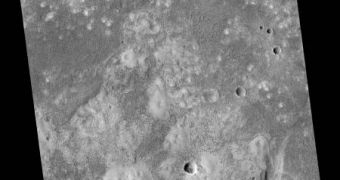Recent discoveries on Mars seem to hint that active muddy volcanoes still exist on the Red Planet, which would mean that its core is not completely dead, as first thought. If this is the case, than it could be generating warmth and lava movements, either deep inside or just under the surface. Warmth has the potential to melt the ice that covers the planet, and liquid water is known for being able to support at least some forms of life. Now, astronomers are starting to wonder if the formations that look like muddy volcanoes may hold at least simple microbes, the remnants of a possible biosphere on Mars.
Indeed, it seems like a long shot, but a growing number of scientists believe that Earth-based space agencies should begin to develop either orbiters able to pick up microscopic life, or rovers capable of taking samples from those regions themselves, analyze them in internal labs, and then send the results back to Earth. There are currently a number of hypotheses that researchers around the world are submitting to the international community for consideration.
One of them holds that the three recent plumes of gases that have been recorded coming out from the ground are actually a source of methane, which is known to be produced by microbes and bacteria. If their theory is true, then it could be that these organisms still exist under a few kilometers of Martian surface.
They remain so deep because the closer they are to the core of the planet, the higher the chances of liquid water forming due to the internal heat source are. On the surface, they would stand no chance, in the freezing temperatures that characterize the Martian landscape.
“Clays have the ability to sequester organic molecules, like ammonia and proteins. They might retain a memory of any organisms that were there,” Arizona State University in Tempe expert Jack Farmer says. He adds that studying the clay around these formations may yield very interesting results, but cautions that they could have been left behind by glaciers retreating and not by volcanic activity.
Experts from NASA's Johnson Space Center in Houston, Texas, led by Dorothy Oehler and Carlton Allen, have used data beamed back by the Mars Odyssey spacecraft to identify a number of mud volcano-like mounds located on the Northern plains of the Red Planet. They share that a mission to the area might be our best chance of discovering whether our neighbor supported life in the past, or if it does so even now.

 14 DAY TRIAL //
14 DAY TRIAL //